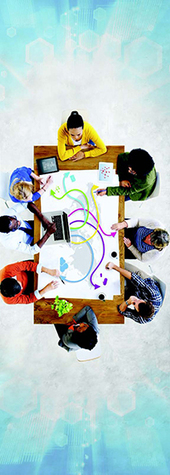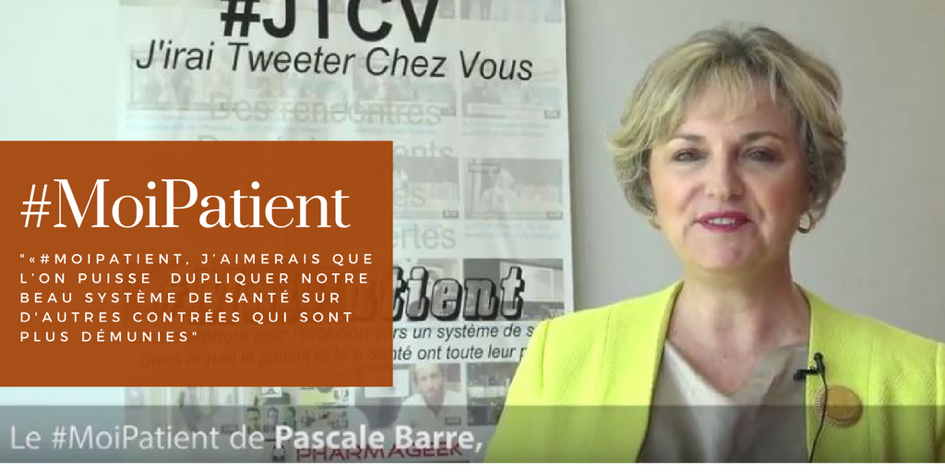Garmin, Asus, Sony all unveil fitness trackers | mobihealthnews
05/09/2014Hepatoweb HD pour IPad
05/09/2014Technology in Academic Medicine: Integrating Digital Literacy into Medical Education
As social media plays an increasingly important role in health care delivery, a growing number of medical educators are helping future physicians develop what they call digital literacy and digital professionalism.
Bertalan Meskó, M.D., Ph.D., a medical futurist who travels the world consulting and lecturing on digital literacy in health care, frames digital literacy as “the way that medical professionals can use digital devices as well as online solutions in communication with patients and their peers.” Meskó believes that “today’s medical professionals must be masters of different skills that are related to using digital devices or online solutions” and argues that mastering those skills “is now a crucial skill set that all medical professionals require.”
Bryan S. Vartabedian, M.D., an assistant professor of pediatrics at Baylor College of Medicine, suggests that because digital tools have become so pervasive in medicine, medical schools have an obligation to help medical students learn how to be smart about them and to apply professional standards in their use. The rise of social media and networked communications means that “physicians now have to learn to manage and maintain their identity in the public space,” Vartabedian said.
“This is brand new. For the better part of modern civilization, physicians only had to worry about their image during a 15-minute encounter with the patient,” Vartabedian said. “Now, the democratization of media has made every physician an independent publisher. That brings a whole new set of responsibilities for which physicians need to be trained. Under what context do we discuss certain items? How do we manage our online identity? What can we do and what should we not do with smartphones?”
While digital literacy is not yet part of the core curricula in medical schools, it is beginning to appear more regularly and more formally as extracurricular learning.
At the University of California, Irvine, School of Medicine (UC Irvine), for example, medical students can take the elective Health 2.0 + Digital Literacy. Designed to fill gap in student understanding about emerging trends in health care technology and social media, the course focuses on such topics as how to manage requirements for the Health Insurance Portability and Accountability Act (HIPAA), data security, health record protection, and the emerging importance that digital tools have in patient-centered health care.
The school periodically offers short training sessions on digital literacy. “We catch students at their first-, second-, and third-year orientations and again before they graduate,” said Warren Wiechmann, M.D., M.B.A., associate dean of instructional technologies at the school. “We talk about the basics of social media and professionalism, and also cover newly emerging technologies like Google Glass and 3-D printing. We’ve also put on a session about how to curate content on the Web.”
In addition, he said, the school offers workshops on what qualifies as a good website or smartphone app. Other sessions look more broadly at topics in health information technology, including the business of technology and how the startup market works.
At Baylor, Vartabedian developed a course called Digital Smarts, which helps medical students develop a professional, safe, and intentional strategy for their interactions with social media. Like UC Irvine, Baylor takes a longitudinal approach.
“Digital Smarts aims to prepare our students for the realities of the digital age,” Vartabedian said. “We effectively touch our students at three or four points over the course of three or four years. At orientation, we cover very broad issues about students’ online identity and topics like the permanence of digital messaging. When they hit 18 months, right before they go to the ward, we talk about more specific clinical scenarios they will face, such as what you should and shouldn’t do when communicating with patients on platforms like Twitter.” For fourth-year students, the focus switches to such topics as how students can build a digital footprint and how they can present themselves online as they advance into residency and start to groom themselves for new jobs.
Under the aegis of the AAMC Group on Information Resources, Vartabedian and Wiechmann collaborated with Katherine Chretien, M.D., an associate professor of medicine at the George Washington University School of Medicine & Health Sciences, and Neil Mehta, M.D., an associate professor of medicine at the Cleveland Clinic Lerner College of Medicine at Case Western Reserve University, to develop a digital literacy toolkit for educators and learners. Available online through the AAMC, the toolkit includes case studies and guidelines on the use of social media, educator notes, and other resources.
“The concept behind the toolkit was to put together a set of materials that any faculty member, from the most junior faculty member to a dean, can use to host a meaningful discussion about social media, digital literacy, and digital professionalism,” Wiechmann said. “You don’t need to have an expert on campus or in a program to be able to have these discussions.”
Vartabedian said that because social media “now represents the modern means of both sharing information and communicating,” tomorrow’s physicians need specific training that can help them be professional in their use of digital tools. “The public presence of the physician is something that needs to be taken very seriously,” he said. “I might even go further to suggest that medical schools have a civic if not a moral obligation to be preparing our students for how to maintain themselves in the public space. Medical schools have a responsibility to help students understand where the limits are.”
Source: www.aamc.org




